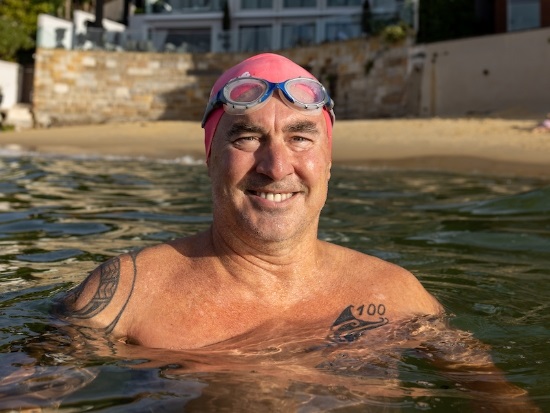Harbour water quality
Water quality in Sydney Harbour
Sydney Harbour is remarkable compared to most working harbours near large cities as it hosts a great diversity of marine life and is safe for swimming in many locations. Over 3000 marine species have been identified in the harbour including more than 600 different fish. We have five local beaches that are rated good for swimming most of the year.
Maintaining the quality of water that flows into the harbour from surrounding suburbs is a challenge for all urban areas.

What happens to water quality following heavy rain?
When it rains our waterways can become polluted from stormwater that flows from our backyards, streets and parks. Stormwater is any rain that doesn’t infiltrate and flows into the drainage network. Stormwater is contaminated by anything it can carry with it, such as leaves, litter, dog poo, detergents, chemicals, oil and other pollutants. In Woollahra this water flows down our drains, through the stormwater pipes, along creeks and concrete channels then finally into the Harbour.
Contaminants in stormwater impact the water quality at our swimming beaches.
How do I know if it’s safe to swim?
Water quality at the swimming beaches in Sydney Harbour is regularly monitored by the NSW Government Beachwatch Program. You can check forecasts and alerts for water quality at our harbour beaches here or via the Beachwatch app.
During dry weather water quality in many parts of the harbour, including our local harbour beaches, is generally suitable for swimming.
During wet weather stormwater carries contaminants into stormwater channels that flow into the harbour. The stormwater system and sewage system are separate networks. However, when sewage systems become blocked or exceed capacity in heavy rain, sewage can overflow into our waterways. This results in higher levels of microbial and chemical pollutants that make the water unsuitable for swimming.
Caution: as a general precaution, swimming in Sydney Harbour should be avoided for up to three days following rainfall or for as long as stormwater is present.

Which local beaches are monitored for water quality?
Beachwatch monitors six beaches in our area.
- Redleaf Beach at Double Bay
- Rose Bay Beach
- Shark Beach at Nielsen Park, Vaucluse
- Parsley Bay Beach
- Watsons Bay Beach
- Camp Cove
Frequently Asked Questions
Why does water quality vary at different harbour Beaches?
Each beach has unique factors that contribute to the level of pollutants present and influence overall water quality. These include:
- mixing of water through natural tidal flushing
- stormwater flows
- sewer overflows and chokes
- flows from other parts of the harbour
- boats
- bathers
- animals
As an example consider the characteristics of Nielsen Park compared with Rose Bay beach.
Nielsen Park has relatively little development in the immediate area and surrounding catchment. Due to the way the bay faces and the depth of water it has high levels of ocean flushing, moving pollutants out quickly. Thus it tends to have better overall water quality.
Rose Bay beach is highly developed with many homes and units in the immediate area and surrounding water catchment. This area can be impacted by sewage contamination following rainfall. It also has shallower waters and is further from the mouth of the harbour, resulting in lower levels of tidal flushing. This makes it more difficult for any pollutants to move out and the beach tends to have lower water quality.
What is being done to improve water quality at Rose Bay Beach?
In 2017 the Rose Bay Beach Working Party was established to find solutions for the water quality issues in this area. The group consists of representatives from Woollahra Council, State Government, including the Department of Planning and Environment (DPE), Sydney Water Corporation, Transport for NSW, the Member for Vaucluse, and the community.
This group developed an action plan and advocated for a study to investigate the sources of sewage contamination and microbial pollutants.
1. Investigating microbial pollutants
The water quality at Rose Bay was investigated in 2019-2020 with funding from the NSW Government. The report from this study provides detailed analysis of the microbial pollution sources in the catchment. It also mapped areas of the catchment with the greatest levels of sewer pollutants entering into stormwater and identified the highest priority areas for further action.
You can find the full report here. Towards Safer Swimming Rose Bay Stormwater catchment audit report 2020.
2. Repairs to pipes and equipment
Several problem sites have been identified and repaired following this study. In addition, sensors have been placed in the sewer network to alert Sydney Water to any leaks that occur, so that action can be taken quickly. Ongoing action to reduce contamination from sewage flows is important to improve the water quality at Rose Bay.
3. Removing litter, plant matter and siltation
Council actively removes litter, plant matter and siltation from our waterways by:
- Installing and maintaining pollution capture devices such as Gross Pollutant Traps.
- Installing raingardens to naturally filter and capture finer pollutants.
- Cleaning our streets, parks and beaches with equipment such as beach rakes and picking up litter by hand.
- Supporting volunteers to clean up litter through our HarbourCare and Environmental Grants programs.
Do building works impact our water quality?
Soil erosion and sediment control is an essential part of any building construction or renovation to prevent materials such as sand, soil and cement from entering our waterways. When soil, cement and other sediment enters our waterways it can have a significant impact on the environment, polluting the water and harming aquatic plants and animals. It can also block stormwater drains causing overflows.
To learn more about the requirements for erosion and sediment control:
More information